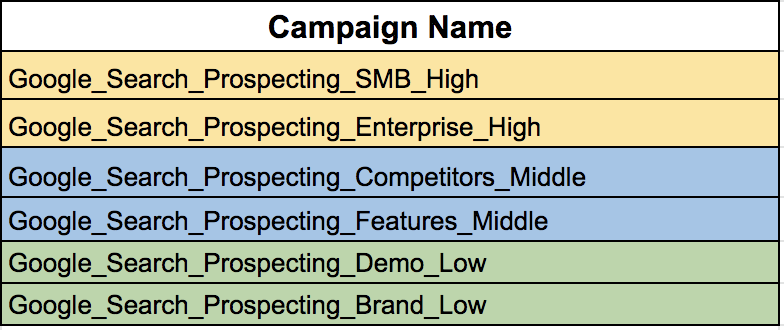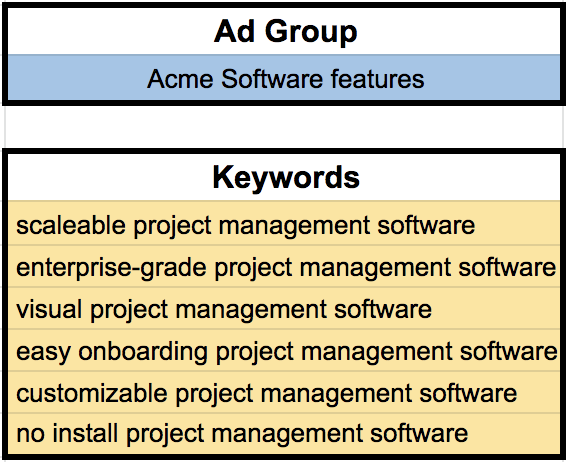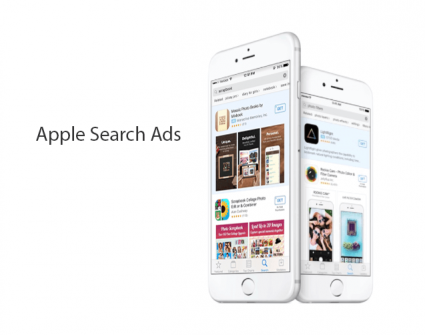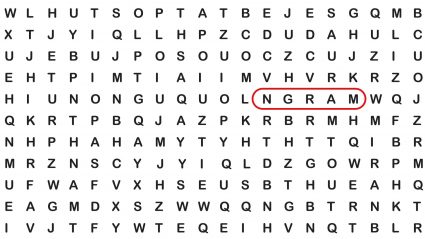Nobody likes fumbling through a mess of cords and wires to untangle them. Except maybe Marie Kondo.
It’s no different with SEM account structures. I’ve encountered my fair share of paid search accounts that have been a nightmare to manage, let alone analyze. That’s why we typically rebuild account structures from the ground up to allow for maximum efficiency, scalability, and organization.
In this article, I’ll cover the basic building blocks you need to create an SEM account structure that is easy to manage and optimize. My goal for you is to walk away with a framework for building an SEM account that will scale with your business needs and makes analyzing your campaign performance a breeze.
First Things First: Reverse-Engineering Your SEM Account Structure
Before jumping into the practicals of account structure organization, it’s important to clarify what your intended goals are with SEM so you can build an account structure that is most conducive to achieving those goals/KPIs.
You might be using SEM to acquire users for your app, sell products on your e-commerce site, or generate leads for your SaaS business. But simply knowing what you want your customers to eventually do is not enough.
You need to define who you want to reach. You can target users who are searching for your brand or intercept users that are looking for your competitor’s products. You can reach people already in the market for what you offer or target users who don’t even know products/solutions like yours exist yet.
Each of these audiences belong to a different stage of the marketing funnel, and each of them will require a different keyword mix to reach them.

Above: Tiers of the marketing funnel and correlating levels of user intent.
Reverse-engineering your account structure, then, means that you should begin with the funnel stages you want to target, and then consider the keywords you’ll need to add to reach those audiences.
Our team recently developed an extensive guide on how to approach keyword research, so if you’re not already familiar with how to find the right keywords to target for each stage of the marketing funnel, I highly recommend reading our guide.
Starting from the Top: Campaign Structure
Once you’ve determined the audiences you want to reach, take your keywords and bucket them into campaigns. Campaigns should organize your keyword buckets because budgets are set at the campaign level – so you’ll be able to set budgets for each audience you want to reach.
This is where your own strategic budget allocation comes into play. You can place higher budgets on upper funnel keyword sets if you’re looking to maximize reach, or focus your spend on low funnel keywords if you’re aiming for the most efficient conversions possible.
Let’s take the example of a B2B SaaS project management company interested in generating leads. For demonstration purposes, let’s call this fictitious company “Acme Software.” Returning to our tiers of the marketing funnel, here are the sort of keywords you’ll find at each level:

As you can see, each keyword becomes increasingly higher in its intent to convert and has a different opportunity value for you when you bid on it.
Depending on your marketing budget and stage of your company, you’ll want to be testing and iterating campaigns at different levels of the marketing funnel – and a clean paid search account structure allows just that.
With a clearly organized account structure, you can set your bids and budgets per tier of the marketing funnel independently as well as test new initiatives to see how each audience reacts.
Want to test a new bidding strategy on these keywords? Try out new ad copy? Increase the budget for your highest funnel terms? Properly segmented campaigns mean that you’ll be able to isolate your tests and get meaningful insights into funnel performance.
Next up is how campaign naming conventions support a well organized paid search account structure.
It’s All in the Name
First, consider the types of information you’d want to know at a glance when looking at a campaign:
Categories For All Search Campaigns
- Channel (Google, Bing, Amazon, Apple, etc.)
- Tactic (Seach, Display, Youtube, etc.)
- Subtactic (prospecting or remarketing)
Categories Specific to Your Business
- Theme (any organizing category)
- Product (type of offering)
- Marketing Funnel Tier (awareness/consideration/conversion, or alternatively low/middle/high, etc.)
Second, consider how you handle your data. For Excel, using text-to-columns with standardized naming conventions (ex: an underscore or dash in between your campaign traits) means that when you pull your data, you can filter for specific categories quickly and utilize pivot tables.
At this point, the basic components of our account structure can combine into a campaign name to look like this:

I’ve provided some examples of different themes that might distinguish campaigns within the same funnel.
When text-to-column-edd, they provide a clean segmentation of campaign categories:

The granularity of detail for campaign naming conventions is nearly boundless, and there are other campaign traits you can include in your naming conventions – such as device, location, language, and keyword match type. The only guideline is this: be as detailed as necessary, but as simple as possible.
Once you’ve grouped your keywords and named your campaigns in this fashion, you’ll immediately recognize what sort of keywords are in each campaign, and why you put them there. Organized. Easy to read. Ready to analyze. Now isn’t that sparking joy already?
Getting To The Middle: Ad Groups
Once you’ve gathered your keyword sets and determined how that affects your campaign segmentation, it’s time to decide how you’ll organize your keywords within ad groups. Ad groups are tied to two essential search marketing functions: (1) ad copy and (2) bid strategy. Both of these operate at the ad group level, so they’re the most relevant factors for how you group your keywords into ad groups.
Ad copy guides how you group your keywords, because you’ll want to make sure that you aggregate keywords based on similar search intent. You don’t want a user to get ad copy that widely misses the search intent of their query.
Bid strategies guide how you group your keywords, because Google’s Smart Bidding algorithms (such as Target CPA, Maximize Conversions, or Target RoAS) thrive off of having enough data signals to optimize against.
These two variables, then, pull you in two directions:
- You want to have as many keywords in an ad group as possible so that you acquire maximal volume for Google’s Smart Bidding strategies to optimize.
- You don’t want to lose the granularity of insight for which ad copy best suits each set of similar intent keywords.

In this example, you can quickly pick up on the sorts of descriptions that could appear in the headlines and description lines of your expanded text ads. This ad group would belong to the campaign focused on product features, and be one of multiple ad groups within that campaign.
Now you’ve clustered your keywords into their respective ad groups and you’ve organized your keywords within their respective campaigns. You’re pulling bid levers to optimize your ad group bids, and you’ll be able to tell at a glance which ad group sets are performing the best. The final step in sparking joy in your account structure, then, is making sure your ad copy’s messaging thematically aligns with your ad groups.
Wrapping it Up: Ad Copy
When it comes to ad copy, all the work you’ve done up to this point provides the guideposts for how to align your ad copy with your campaigns and ad groups.
First, ad copy should be considered from the campaign level – what is the product category you’re writing ad copy for, and where in the funnel will these users be when they see your messaging?
Second, ad copy should be considered from the ad group level – how relevant can you craft the ad copy so that its messaging aligns with the products or features contained within the ad group?
The first level of consideration – at the campaign level – focuses on the theme of the ad copy. Your audience’s place in the funnel and the product category you’re marketing has already been determined by the campaign.
The second level of consideration – at the ad group level – hones in on specifically calling out the customer benefits focused on by the ad group’s keyword mix.
A virtuous cycle occurs here, because Google rewards ad relevance to the keyword sets they’re linked to by granting a higher ad rank (where your ads are shown compared to other ads) .
Higher ad relevance means a higher likelihood your ad copy matches the search intent of the user.
Higher ad relevance means higher quality score, which means lower CPC’s and a better position on the search engine results page.
It’s a win-win.
Finally, once you’ve aligned your ad copy with your ad groups and campaigns, it’s time to use a simple but useful feature: labels. Labels are available at all levels of the account structure (campaigns, ad groups, and keywords as well), but are especially handy when it comes to ad copy iterations. By labeling your ad copy, you can note:
- Which campaign it belongs to
- The date the ad copy began serving
- The part of the ad copy that is being tested
- Whether it’s the champion or contender ad copy

Campaigns, ad groups, keywords, and ad copy. When it comes to paid search accounts, where do you start? As we’ve covered in this guide, it all starts with defining your KPI’s and mapping out how these KPIs correspond to different stages of the marketing funnel. We then discussed how keyword selection determines ideal campaign segmentation, how to map keywords to ad groups, and how to match relevant ad copy to ad groups.
With this framework in mind, there’s a rationale for how each part of the paid search account relates to one another. You now have an adaptable account structure that will scale with your business and spark joy.







Responses